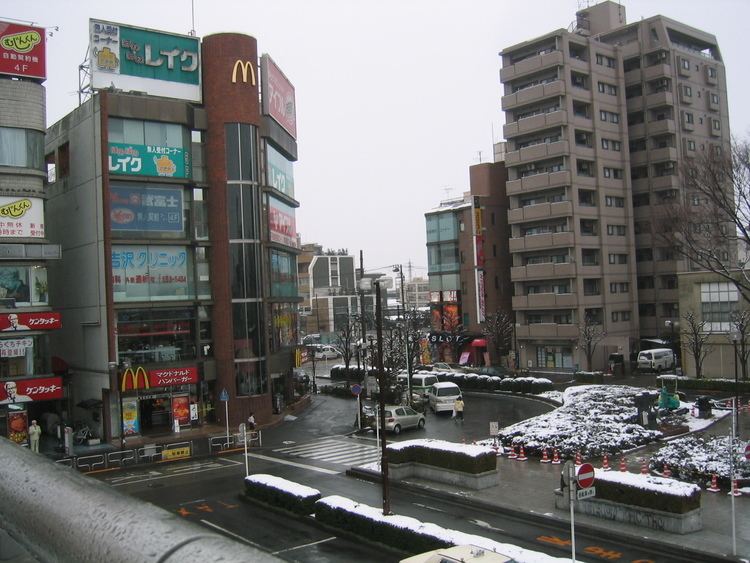Phone number 042-551-1511 Area 10.16 km² Prefecture Tokyo Bird Japanese tit | Region Kantō Website Official website Local time Sunday 3:15 AM Population 58,393 (Feb 2016) | |
 | ||
Points of interest Tamagawaryokuchifussaminami Park, Tamagawa Central Park, Fussakanizaka Park, Tamagawajosuiryokuchinikkobashi Park, Mizukuraido Park | ||
Fussa (福生市, Fussa-shi) is a city located in the western portion of Tokyo Metropolis, in the central Kantō region of Japan. As of 1 February 2016, the city had an estimated population of 58,393 and a population density of 5750 persons per km². Its total area was 10.16 square kilometres (3.92 sq mi).
Contents
- Map of Fussa Tokyo Japan
- Geography
- Surrounding municipalities
- History
- Economy
- Railroad
- Highway
- Education
- Noted people from Fussa
- References
Map of Fussa, Tokyo, Japan
About one third of the city area is occupied by the United States Air Force Yokota Air Base, giving the city an effective population density of 8,782 persons per km2.
Geography
Fussa is approximately in the geographic center of Tokyo Metropolis, on the Musashino Terrace, bordered by the floodplains of the Tama River. The area along the river is home to many parks and almost 300 cherry blossom trees, recreational facilities and bicycle paths.
Surrounding municipalities
History
The area of present-day Fussa was part of ancient Musashi Province. During the Edo period, it was tenryo territory controlled directly by the Tokugawa shogunate and administered by various hatamoto. The area was agricultural and noted for silkworms and sake production. After the Meiji Restoration, the 26 hamlets in the area consolidated into the villages of Fussa, Kumagawa and Tama within the short-lived Shinagawa Prefecture, followed by Kanagawa Prefecture. Parts of the area were involved in the Chichibu Incident of 1884.
The entire district was transferred to the control of Tokyo Metropolis on April 1, 1893, and the Ōme Railway joined Fussa to Tachikawa the following year. Fussa was elevated to town status in 1940, and an airfield for the Imperial Japanese Army was built, and became the central aircraft testing facility for the Army in 1942. During World War II, the area was only lightly bombed (once in 1945 with four casualties), and the military facilities were seized mostly intact by the American military after the war. In the post-war era, Fussa expanded rapidly through the construction of subsidized housing districts, and was elevated to city status on April 1, 1970 .
Economy
Fussa, along with its neighboring cities Iruma and Tachikawa, contains a strong military presence. A large portion of the city's economy focuses on the bases and servicing those who live there. Of note is eastern Fussa's "Bar Row" district, a historic though seedy collection of karaoke bars, shot bars, and massage parlors. The Bar Row area has been a fixture of Fussa nightlife catering to US military personnel since the 1950s. The city also serves as a bedroom community for central Tokyo and a regional commercial center.
